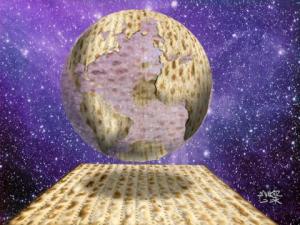 Given my perhaps naive belief that interfaith orientations and integral philosophies are part of humanity’s next evolutionary step in spiritual development, I wondered what kind of music would show up in our culture to reflect this transition in consciousness? Then I turned on the radio and, Voila!
Given my perhaps naive belief that interfaith orientations and integral philosophies are part of humanity’s next evolutionary step in spiritual development, I wondered what kind of music would show up in our culture to reflect this transition in consciousness? Then I turned on the radio and, Voila!
NPR was doing a story on polyrhythms or many rhythms happening at the same time “creating a different shape in the sound”. One example of a polyrhythm is Fake Empire which played during an Obama 2008 election campaign ad. It has two simultaneous beats, 3 and 4. There are plenty of songs with polyrhythms and while it’s not something totally new, we might ask: How can polyrhythms help us develop spiritually?
“The point of [polyrhythm] is to make listening to two rhythms at once feel natural, as easy as talking while you walk. LaFrae Sci says, that’s a life skill.”
Here’s my analogy: If we can learn to hear two or more rhythms simultaneously in music, we can learn to empathize with two or more belief systems simultaneously. Doing so might help us to hear the many sides of a story, appreciate the different points of views in a conflict, and even feel comfortable with learning about and from more than one religion. We might even develop the social equivalent of harmony – justice. In other words, polyrhythms could very well accompany an expansion of consciousness.
You can read here how I teach youth to hold and harmonize multiple ideas about faith, identity, and community so that they will have the life skills to solve practical, global problems with peers from many faiths and cultures for the benefit of all humanity. That may be a tall order. But at the very least, polyrhythms ask us to change the way we listen to music. In the process, they might help us to change the way we listen to each other.
Explore the Resources my this website to learn more about interspiritual ideas and programs.
 I know. Hanukkah passed. But the season of darkness hasn’t. Now that you aren’t distracted by dreidels, light eight candles anyway. For the Light.
I know. Hanukkah passed. But the season of darkness hasn’t. Now that you aren’t distracted by dreidels, light eight candles anyway. For the Light.
 Given my perhaps naive belief that interfaith orientations and integral philosophies are part of humanity’s next evolutionary step in spiritual development, I wondered what kind of music would show up in our culture to reflect this transition in consciousness? Then I turned on the radio and, Voila!
Given my perhaps naive belief that interfaith orientations and integral philosophies are part of humanity’s next evolutionary step in spiritual development, I wondered what kind of music would show up in our culture to reflect this transition in consciousness? Then I turned on the radio and, Voila! 
 The New York Times today (1 Oct 2013) posted
The New York Times today (1 Oct 2013) posted